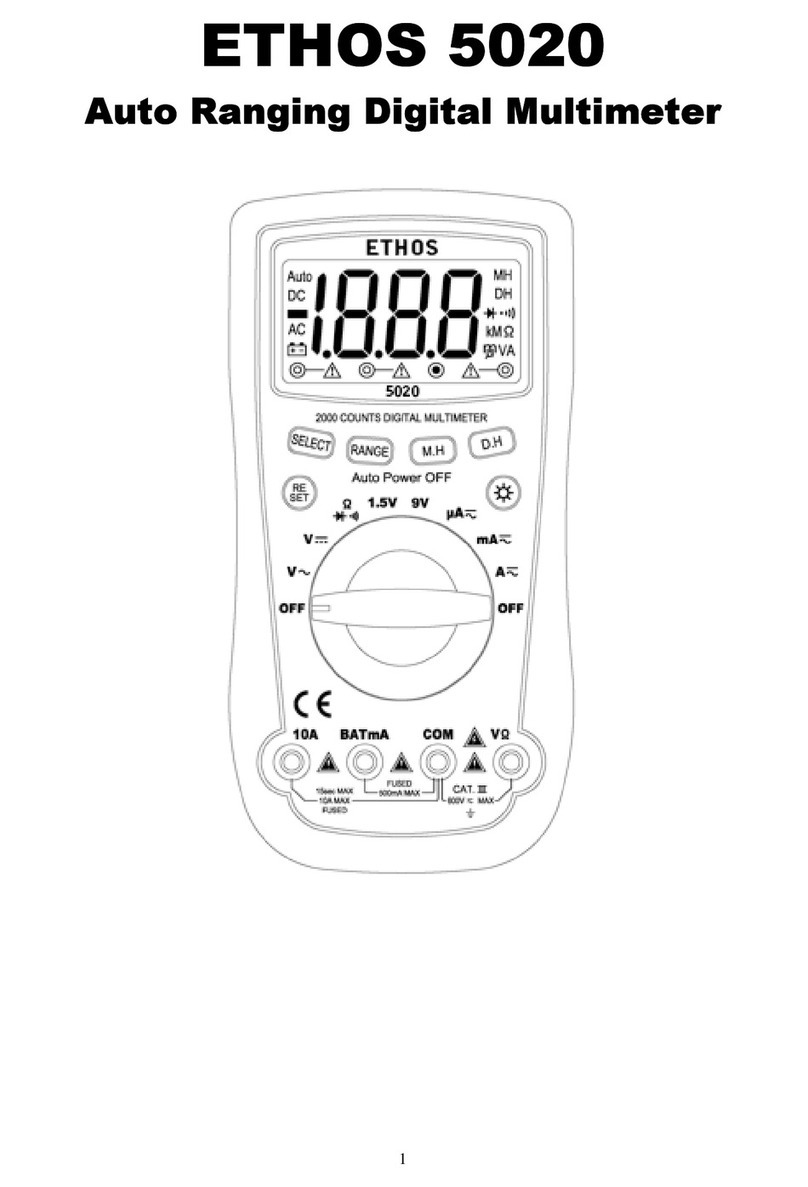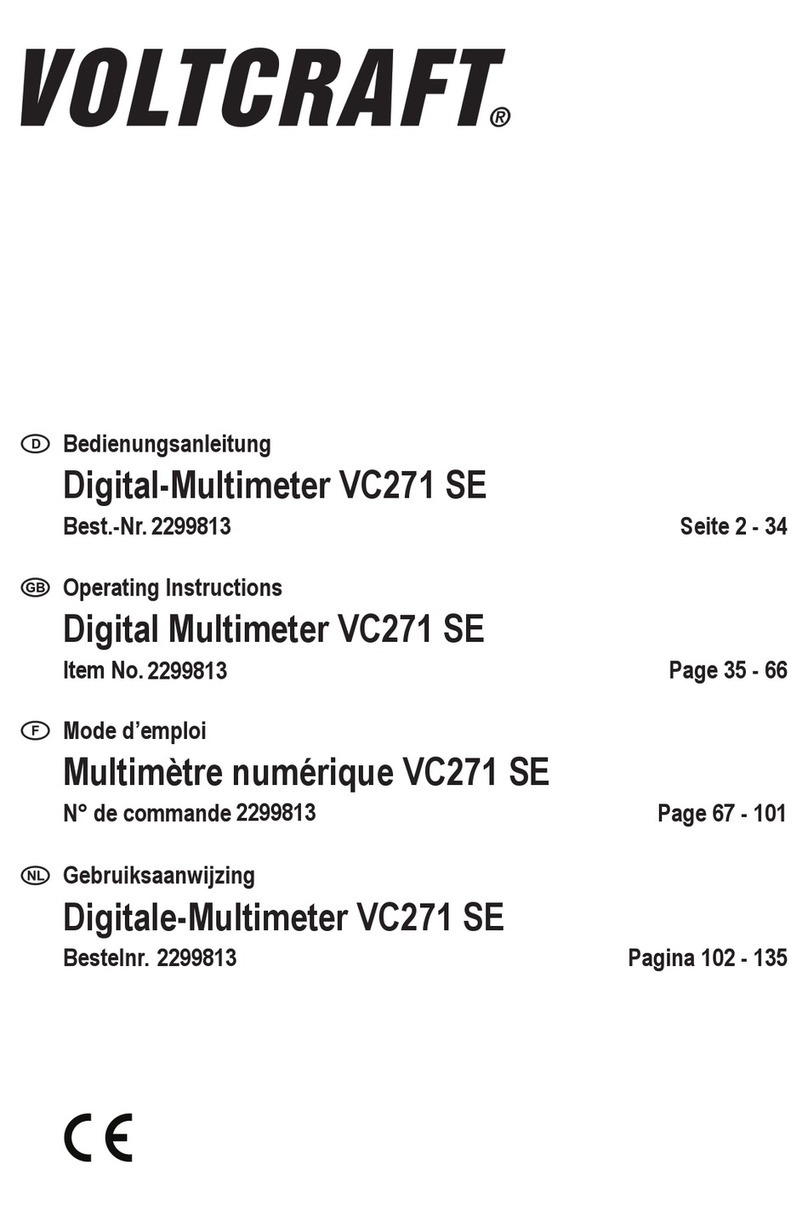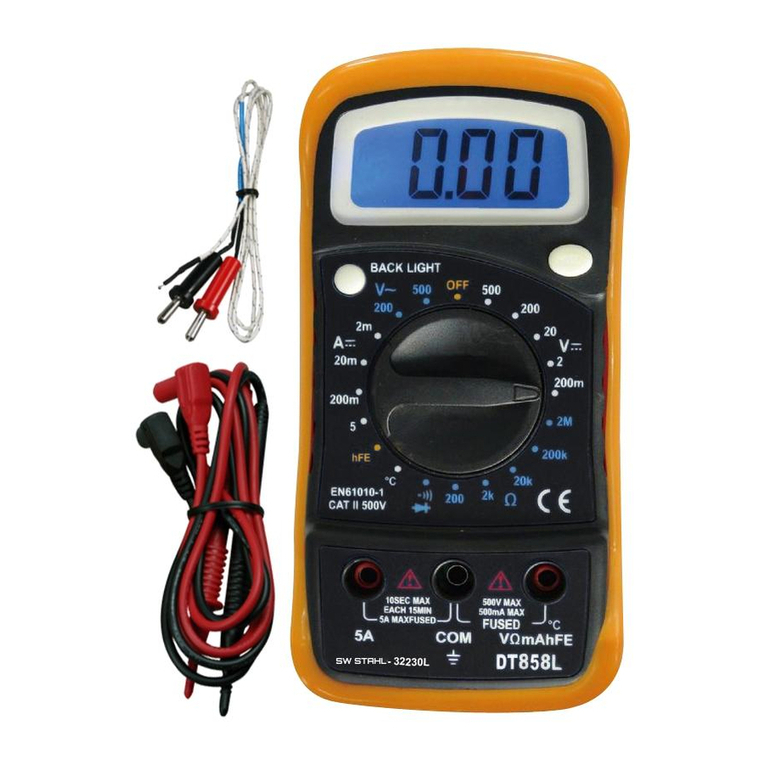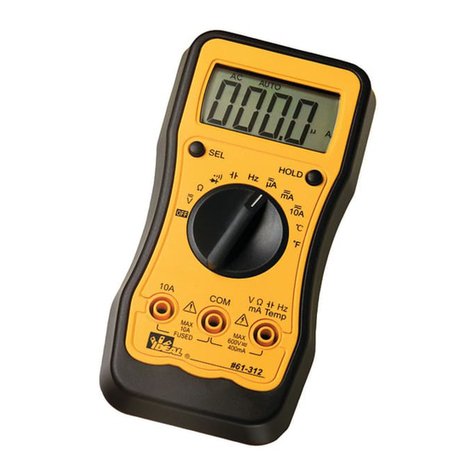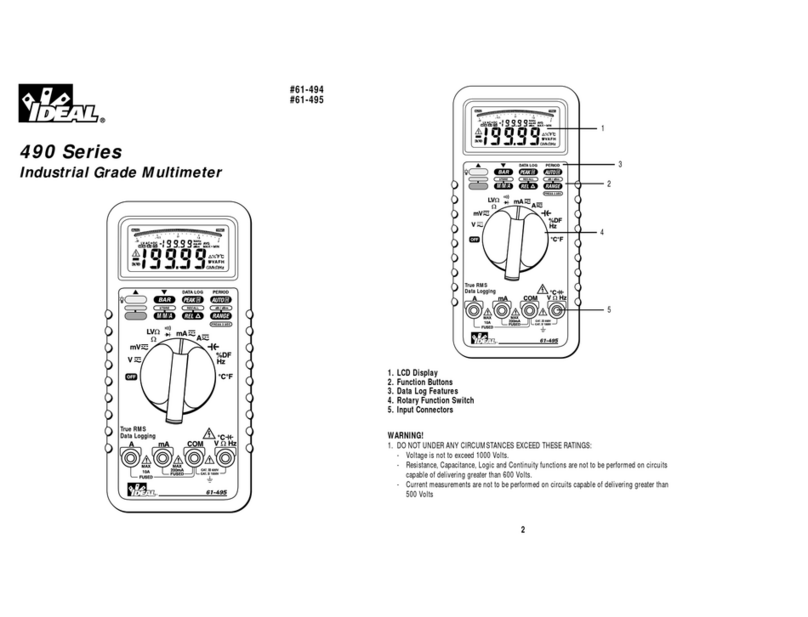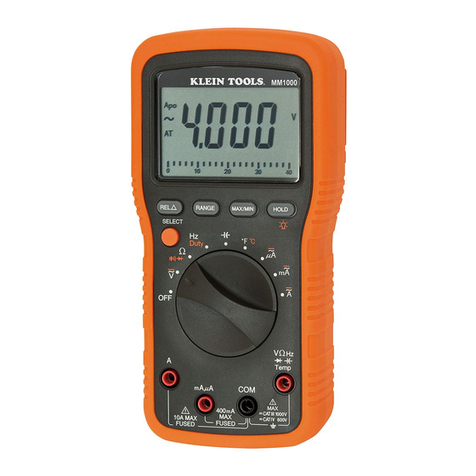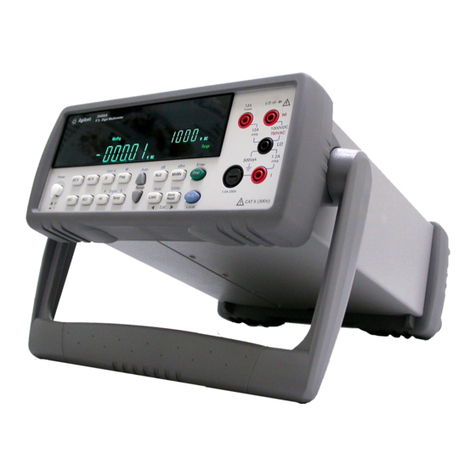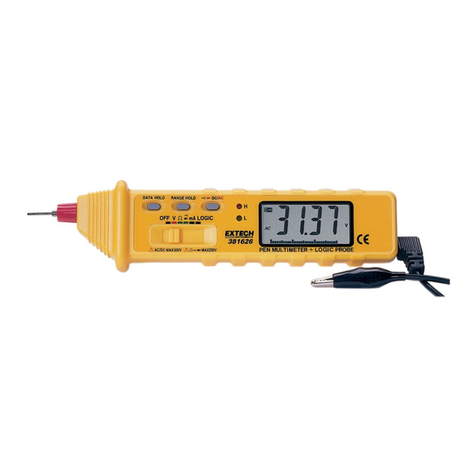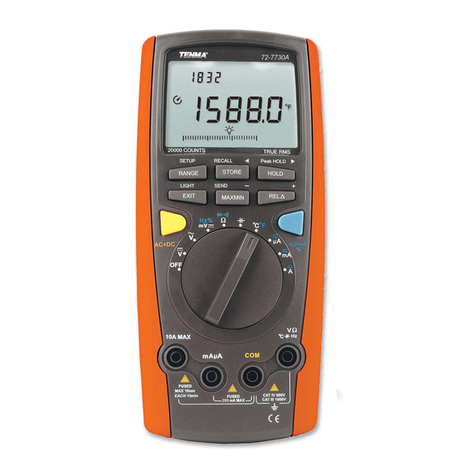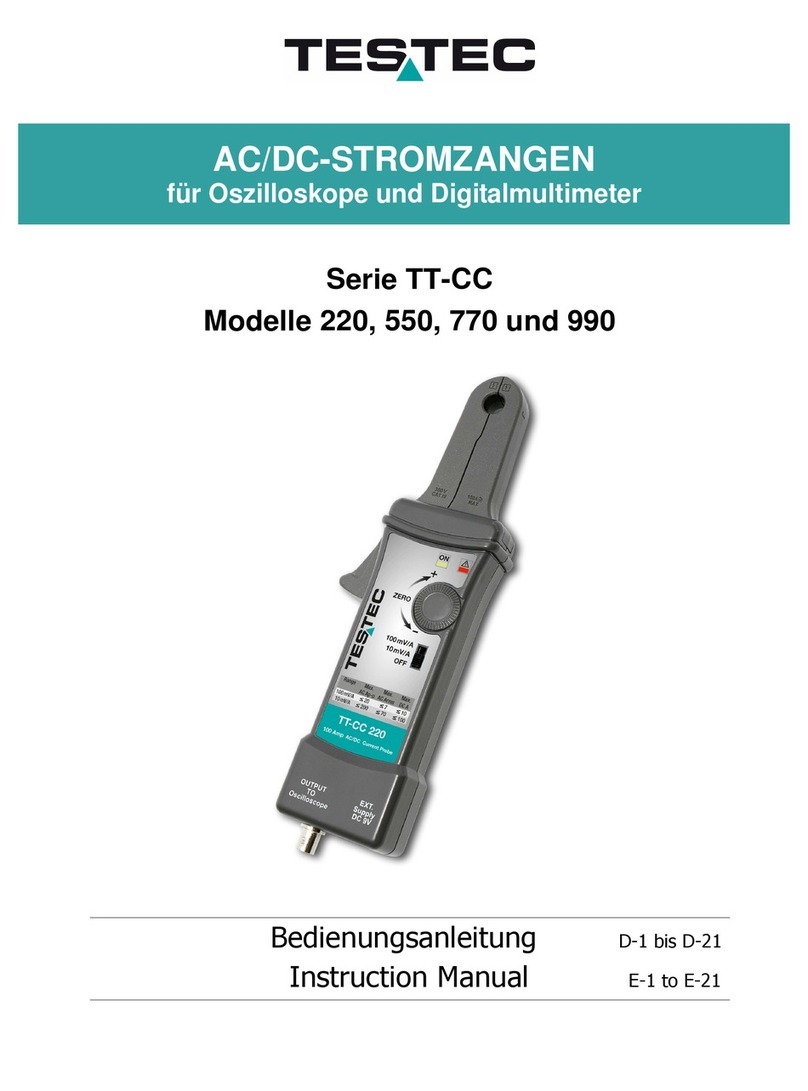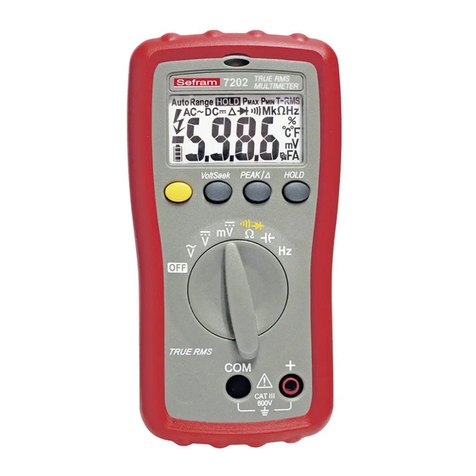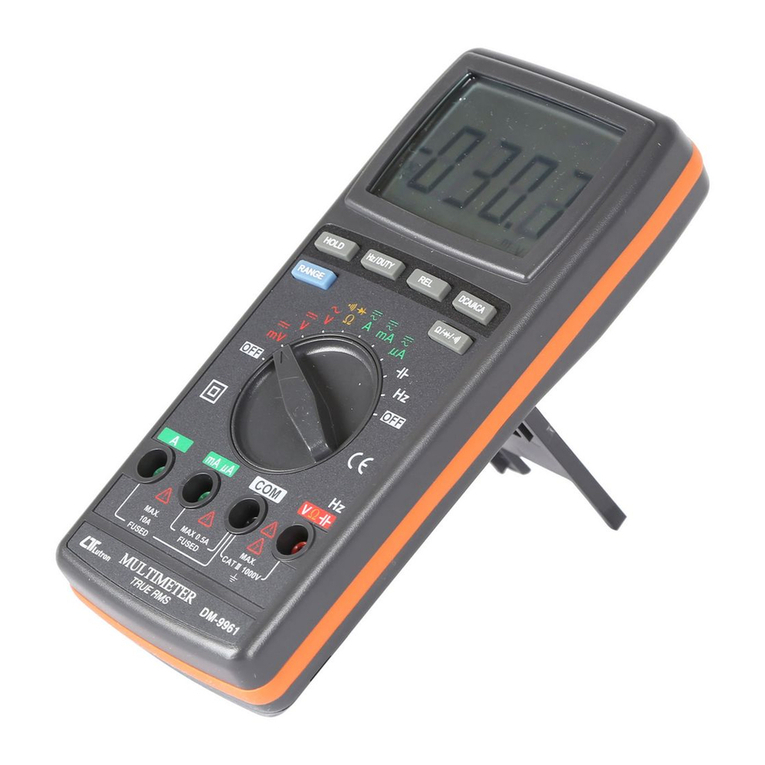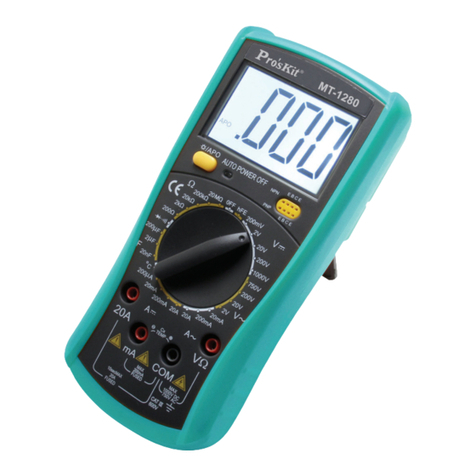Ethos 5050 User manual

Table of Content
The Statement..................................................................................................................................................................... 1!
Safety Statement ........................................................................................................................................................ 1!
Safety Instructions ...................................................................................................................................................... 2!
Safety Operation Specifications ............................................................................................................................... 2!
Safety Symbols ........................................................................................................................................................... 4!
Overview .............................................................................................................................................................................. 6!
LCD Display................................................................................................................................................................. 6!
Buttons ......................................................................................................................................................................... 8!
Rotary Switch .............................................................................................................................................................. 9!
Input Socket............................................................................................................................................................... 10!
At the Top .................................................................................................................................................................. 11!

Measurement Operation.................................................................................................................................................. 11!
Manual and Automatic Range ................................................................................................................................ 11!
Measure AC Voltage ................................................................................................................................................ 13!
Measure DC Voltage................................................................................................................................................ 14!
Measure Frequency and Duty ................................................................................................................................ 15!
Measure AC or DC Current..................................................................................................................................... 16!
Measure Resistance ................................................................................................................................................ 18!
Measure Connectivity .............................................................................................................................................. 19!
Measure Capacitance.............................................................................................................................................. 20!
Measure Diode.......................................................................................................................................................... 21!
Measure Temperature ............................................................................................................................................. 23!
Measure Humidity..................................................................................................................................................... 24!
Measure Illuminance................................................................................................................................................ 25!

Measure Noise.......................................................................................................................................................... 25!
Auto Power-off Function .................................................................................................................................................. 26!
Backlight Function ............................................................................................................................................................ 26!
Data Hold ........................................................................................................................................................................... 27!
General Technical Specifications................................................................................................................................... 28!
Accuracy Specifications................................................................................................................................................... 30!
DC Voltage ................................................................................................................................................................ 30!
AC Voltage................................................................................................................................................................. 31!
DC Current................................................................................................................................................................. 31!
AC Current................................................................................................................................................................. 32!
Resistance ................................................................................................................................................................. 32!
Connectivity Test ...................................................................................................................................................... 33!
Capacitance............................................................................................................................................................... 33!

Frequency and Duty................................................................................................................................................. 34!
Diode Test.................................................................................................................................................................. 35!
Noise(dB).............................................................................................................................................................. 35!
Illuminance(Lux).................................................................................................................................................. 35!
Humidity(RH, shown in humidity display area)............................................................................................... 36!
Temperature .............................................................................................................................................................. 36!
Maintenance...................................................................................................................................................................... 37!
General....................................................................................................................................................................... 37!
Replace Battery and Fuse....................................................................................................................................... 37!

1
The Statement
In accordance with the international copyright law, without permission and written consent, do not copy the
contents of this manual in any form (including storage and retrieval or translation into languages of other
countries or regions). The manual is subject to change in future edition without prior notice.
Safety Statement
Caution
“Caution” mark refers to the condition and operation which may cause damage to the instrument or
equipment.
It requires that you must be careful during the execution of the operation. If you incorrectly perform the
operation or do not follow the procedure, it may damage the instrument or equipment. In the circumstances
that such conditions are not met or not fully understood, please do not continue to perform any operation
indicated by the caution mark.
Warning
“Warning” mark indicates the condition and operation which may cause danger to users.
It requires that you must pay attention during the execution of this operation. If you incorrectly perform the
operation or do not follow the procedure, it may result in personal injury or casualties. In the circumstances that
such conditions are not met or not fully understood, please do not continue to perform any operation indicated
by the warning mark.

2
Before using the instrument, please read this manual carefully and
pay attention to the relevant safety warning information.
Safety Instructions
The instrument is designed in accordance with the safety requirements on electronic measurement
instruments in International Electrical Safety Standards IEC61010. The instrument is designed and
manufactured strictly in accordance with provisions in IEC61010-1 CAT.III/1000V, over-voltage safety
standard CAT.IV/600V and pollution level 2.
Safety Operation Specifications
Warning: In order to avoid possible electric shock or peronal injury and other safety accidents,
please abide by the following specifications:
!Before using the instrument, please read this manual carefully, and pay attention to the safety warning
information.
!Check whether there are any cracks or damage on the plastic parts of the outer cabinet before using the
instrument, if any, please do not use it.
!Before using the instrument, please check whether the instrument works properly, if it’s not or it has been
damaged, please do not use.

3
!Before using the instrument, please carefully check the insulator around the input terminals of the
instrument, please do not use if any damage.
!Before using the instrument, please check whether there’s any crack or damage on the probe, if any, please
replace the probe with same specifications.
!Before using the instrument, please check whether there’s any damage, metal exposed or sign of wear on
the insulating layer of the probe, check the connectivity of the probe, if any damage, please do not use.
!Before using the instrument, please use it to measure a known voltage to verify whether the instrument
works properly.
!Use the instrument strictly in accordance with the operation in the manual, otherwise the protection function
provided by the instrument may be damaged or weakened.
!The instrument shall be used in accordance with the specified measurement category, voltage or current
rating.
!Please comply with local and national safety code. Wear personal protection equipment (such as approved
rubber gloves, masks and flame retardant clothes, etc.) to prevent being damaged by electric shock and
electric arc due to exposed hazardous live conductor.
!Before connecting the instrument to the circuit under test, be sure to choose the correct input terminal and
switch position.
!The voltage applied between input terminals or between any terminal and earth point cannot exceed the
specified ratings of the instrument.

4
!Please be careful if the measurement exceeds 30V AC true RMS, 42V AC peak or 60V DC. There may be
danger of electric shock at this kind of voltage.
!When it shows low battery indicator, please replace the battery in time in case of any measurement error.
!Do not use the instrument around explosive gas, steam or in wet environment.
!When using the probe, please put your fingers behind the finger protector of the probe.
!When measuring, please connect the zero line or the ground line firstly, then connect the live wire; but when
disconnecting, please disconnect the live wire firstly, then disconnect the zero line and ground line.
!Before opening the outer cabinet or battery cover, please remove the probe on the instrument. Do not use
the instrument in the circumstances that the instrument is taken apart or battery cover is opened.
!It only meets the safety standards when the instrument is used together with the supplied probe. If the
probe is damaged and needs to replace, the probe with same model number and same electrical
specifications must be used for replacement.
Safety Symbols
High voltage warning
AC (Alternating current)

5
DC (Direct current)
AC or DC
Warning, important safety signs
Ground
Fuse
Equipment with double insulation or reinforced insulation protection
Battery Low
Product complies with all relevant European laws
The additional product label shows that do not discard this electrical/electronic product
into household garbage.
CAT. III 1000V
CAT III 1000 V over-voltage protection
CAT. IV 600V
CAT IV 600 V over-voltage protection

6
Overview
The instrument is a hand-held intelligent multifunctional measurement instrument, integrating noise,
illuminance, humidity, temperature and digital multimeter into one. With large LCD digital display (three sets of
data display) and backlight, it’s easy for user to read, with overload protection and battery Low indication.
Whether for professionals, factories, schools, amateurs or family, it’s an ideal multi-functional instrument.
LCD Display
!
Noise or duty ratio unit
"
Normal temperature display unit,
Fahrenheit
#
Normal temperature display unit,
centigrade
$
Temperature display area
%
Normal temperature display minus
&
Connectivity measurement indicator

7
'
Diode test indicator
(
Humidity unit
)
Battery Low indicator
*
AC voltage or current
indicator
+
Humidity display area
,
Relative value measurement
indicator
-
Illuminance unit
.
Data hold indicator
/
Automatic range indicator
0
Resistance or
frequency unit
1
Auto power-off indicator
2
DC voltage or current indicator
3
Capacitance unit
4
Minus
5
Voltage or current unit
6
Main display area
7
Temperature unit

8
Buttons
)
RANGE: switch between automatic range and manual
range
,
Hz%: switch between frequency and duty ratio
/
REL: relative value measurement
2
°C/°F: switch between centigrade and Fahrenheit
4
HOLD: data hold
6
FUNCTION: switch among function selections
*
: backlight
¡£¡£

9
Rotary Switch
)
OFF
,
AC or DC voltage, press FUNCTION button to switch
/
Frequency, duty ratio, press Hz% button to switch
2
Resistance, diode, connectivity, capacitance, press FUNCTION
button to switch
4
Temperature measurement, press °C/°F button to switch unit
6
Noise measurement
*
Illuminance measurement
-
Illuminance measurement x10 gear, measurement result=displayed
value x10
0
AC and DC current microampere measurement, press FUNCTION
button to switch
3
AC and DC current milliampere measurement, press FUNCTION
button to switch
5
AC and DC current ampere measurement, press FUNCTION button
to switch

10
Input Socket
)
Used for AC and DC current measurement (can measure maximum 10A), input socket for
frequency/duty ratio measurement (frequency measurement in current mode).
,
Used for AC and DC microampere (µA) and milliampere (mA) measurement (can measure maximum
400mA) and input socket for frequency/duty ratio (frequency measurement in current mode); positive
input socket of K type thermocouple temperature measurement.
/
Used for public terminal of all measurement; negative input socket of K type thermocouple temperature
measurement.
2
Input socket for voltage, resistance, connectivity, diode, capacitance, frequency, duty ratio

11
measurement.
At the Top
)
Illuminance induction area, when measuring the illuminance, this area
should be vertically aligned to the light source
,
Normal temperature and humidity induction area
/
Noise induction area, when measuring noise, this area should be
aligned to the noise source
Measurement Operation
Manual and Automatic Range
The instrument is equipped with manual and automatic range. In automatic range mode, the instrument
will select the best range for the input signal detected, so it is convenient that the user does not need to
re-select range when changing the measuring signal. The instrument can also be set to manual range. It is
defaulted as automatic range mode after the unit is turned on or function is switched, the instrument displays
“AUTO” symbol. The operations of entering or quitting manual range are as follows:
1. In automatic range mode, press button, “AUTO” symbol hides.

12
2. Press button to increase the range, when reached the maximum range, the instrument will return to
the minimum range.
3. Press and hold button for 2 seconds to quit manual range mode, the instrument displays “AUTO”
symbol.
Note: for function of frequency, duty ratio, capacitance, diode, connectivity, temperature, noise
and illuminance measurement, the button is invalid.
Relative Value Measurement
The instrument is equipped with relative value measurement function. In this mode, the instrument display
value=actual value-set reference value. Operations of entering or quitting relative measurement are as follows:
1. Set the instrument to the measurement function you need, contact the probe to the measured object
which you want to set as reference value.
2. Press button, set the measured value as reference value, enter the relative measurement mode,
the instrument displays “REL” symbol.
3. Measure, the instrument will display “actual value-set reference value”.
4. Press and hold button and quit relative value measurement mode, the “REL” symbol hides.
Note: frequency, duty ratio, diode, connectivity, temperature, noise and illuminance

13
measurement has no relative value measurement mode.
Measure AC Voltage
As shown in the figure on the right, set the instrument to
the function of AC voltage measurement, contact the probe
to the measured circuit, then read the display value. The
steps are as follows:
1. Scroll the rotary knob to , press “FUNCTION” button
and switch to AC voltage function.
2. Insert the red probe in “V”, and the black probe in
“COM”.
3. Contact the probe to the measured circuit, measure
the voltage.
4. Read the measurement result on the screen.
Note1: It can be switched to AC voltage 400mV range
only through manual range.
Note2: Press Hz% button to measure the frequency and duty ratio of the AC voltage source, please
refer to Measure Frequency.
¡£¡£
V

14
Warning!
Do not allow measurement of any voltage higher than DC 1000V or AC 750VRMS, otherwise it may
cause instrument damage, electric shock or personal injuries.
Do not allow applying voltage exceeding DC 1000V or AC 750V RMS between a public terminal
and the earth, otherwise it may cause instrument damage, electric shock or personal injuries.
Measure DC Voltage
As shown in the figure on the right, set the instrument
to the function of DC voltage measurement, contact the
probe to the measured circuit, then read the display value.
The steps are as follows:
1. Scroll the rotary knob to , press “FUNCTION”
button and set to DC voltage function.
2. Insert the red probe in “V”, and the black probe in
“COM”.
3. Contact the probe to the measured circuit, and
measure the voltage.
4. Read the measurement result on the screen.
¡£¡£
V

15
Note: Press Hz% button to measure the frequency and duty ratio of the AC voltage source, please
refer to Measure Frequency.
Warning!
Do not allow measurement of any voltage higher
than DC 1000V or AC 750VRMS, otherwise it may cause
instrument damage, electric shock or personal injuries.
Do not allow applying voltage exceeding DC 1000V
or AC 750V RMS between a public terminal and the
earth, otherwise it may cause instrument damage,
electric shock or personal injuries.
Measure Frequency and Duty
As shown in the figure on the right, set the instrument to
the function of Hz% measurement, contact the probe to the
measured circuit, then read the display value. The steps are
as follows:
1. Scroll the rotary knob to “Hz%”, press “Hz%” button
and switch between frequency and duty. (or in AC voltage or
AC current shift frequency and duty can also be measured)
2. Insert the red probe in “V”, and the black probe in
¡£¡£
Hz

16
“COM”.
3. Contact the probe to the measured circuit, and measure the frequency.
4. Read the measurement result on the screen.
Note: switch to Hz% shift and voltage or current shift to measure the frequency sensitivity and
measurement range, please refer to Frequency accuracy index.
Warning!
Do not allow measurement of any voltage higher than DC
1000V or AC 750VRMS, otherwise it may cause instrument
damage, electric shock or personal injuries.
Do not allow applying voltage exceeding DC 1000V or AC
750V RMS between a public terminal and the earth, otherwise it
may cause instrument damage, electric shock or personal
injuries.
Measure AC or DC Current
As shown in the figure on the right, set the instrument to the
function of measurement, connect the probe to the
measured circuit in series, then read the display value. The steps are
¡£¡£
V
V
Table of contents
Other Ethos Multimeter manuals

